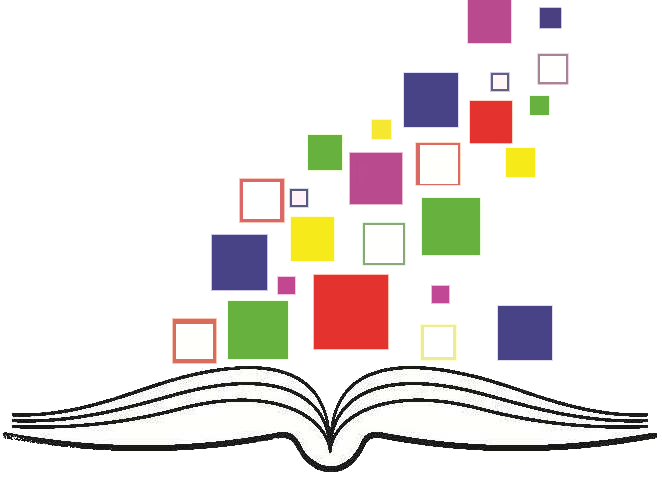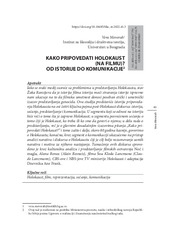Приказ основних података о документу
Kako pripovedati Holokaust (na filmu)? Od istorije do komunikacije
How to narrate the Holocaust (on film)? From history to communication
| dc.creator | Mevorah, Vera | |
| dc.date.accessioned | 2023-12-07T13:04:31Z | |
| dc.date.available | 2023-12-07T13:04:31Z | |
| dc.date.issued | 2022 | |
| dc.identifier.uri | https://www.jevrejskadigitalnabiblioteka.rs/handle/123456789/2599 | |
| dc.description.abstract | Iako se svaki medij susreće sa problemima u predstavljanju Holokausta, stav Žaka Ransijera da je istorija filma istorija moći stvaranja istorije ispravno nam ukazuje na to da filmska umetnost donosi poseban etički i umetnički izazov predstavljanja genocida. Ova studija predstaviće istoriju pripovedanja Holokausta na osi četiri ključna pojma post-Holokaust diskursa: istorija, sećanje, predstavljanje i komunikacija. U segmentu koji se odnosi na istoriju biće reči o tome šta je zapravo Holokaust; u segmentu posvećenom sećanju o tome čiji je Holokaust, ko treba ili ko sme da govori o njemu; u delu rada o predstavljanju, reč je o glavnim dosadašnjim izazovima pitanja „Kako pripovedati Holokaust?” i tome zašto i dalje, skoro 80 godina kasnije, govorimo o Holokaustu; konačno, kroz segment o komunikaciji ukazaćemo na pristup analizi narativa i diskursa o Holokaustu čiji je cilj bolje razumevanje samih narativa i motiva za njihovo nastajanje. Tumačenje ovih diskursa sprovedeno je kroz kulturalnu analizu i predstavljanje filmskih ostvarenja Noć i magla, Alana Renea (Alain Resnais), filma Šoa Kloda Lancmana (Claude Lanzmann), CBS-ove i NBS-jeve TV miniserije Holokaust i adaptacija Dnevnika Ane Frank. | sr |
| dc.description.abstract | Although all media forms meet unique problems in (re)presenting the Holocaust, Jacques Ransier's view that film history is the history of the power to create history rightly indicates that film art faces special ethical and artistic challenges in representing the Shoah. This study will present the history of the Holocaust narrative on the axis of four key concepts of post-Holocaust discourse: history, memory, representation, and communication. The history segment focuses on what the Holocaust is; in the segment concerning memory we will discuss the issue of “who does it belong, who should or should not talk about it”; in the part about representation, our discussion will consider the main challenges of the question “How to speak about the Holocaust?” and why we are still talking about the Holocaust, almost 80 years after the event. Finally, through the segment referring to communications, we will point out the approach for the analysis of narratives and discourses about the Holocaust, the goal of which is a better understanding of the narratives themselves and the motives for their creation. The interpretation of these discourses will be conducted through cultural analysis and presentation of examples from key film achievements on the topic of the Holocaust: Night and Fog, Alan Resnai, Claude Lanzmann’s Shoah, CBS and NBS TV series Holocaust and adaptations of The Diary of Anne Frank. | sr |
| dc.language.iso | sr | sr |
| dc.publisher | Beograd : Institut za pozorište, film, radio i televiziju Fakulteta dramskih umetnosti | sr |
| dc.rights | openAccess | sr |
| dc.rights.uri | https://creativecommons.org/licenses/by-nc-nd/4.0/ | |
| dc.source | Zbornik radova Fakulteta dramskih umetnosti | sr |
| dc.subject | Holokaust - film | sr |
| dc.subject | Holokaust - reprezentacija | sr |
| dc.subject | sećanje | sr |
| dc.subject | komunikacija | sr |
| dc.subject | Holocaust - film | sr |
| dc.subject | Holocaust - representation | sr |
| dc.subject | memory | sr |
| dc.subject | communication | sr |
| dc.title | Kako pripovedati Holokaust (na filmu)? Od istorije do komunikacije | sr |
| dc.title | How to narrate the Holocaust (on film)? From history to communication | sr |
| dc.type | article | sr |
| dc.rights.license | BY-NC-ND | sr |
| dc.identifier.doi | 10.18485/fdu_zr.2022.41.3 | |
| dc.identifier.fulltext | http://jevrejskadigitalnabiblioteka.rs/bitstream/id/8307/KakoPripovedatiHolokaustOCR.pdf | |
| dc.type.version | publishedVersion | sr |
| dc.citation.spage | 43 | |
| dc.citation.epage | 58 | |
| dc.citation.issue | 41 |

